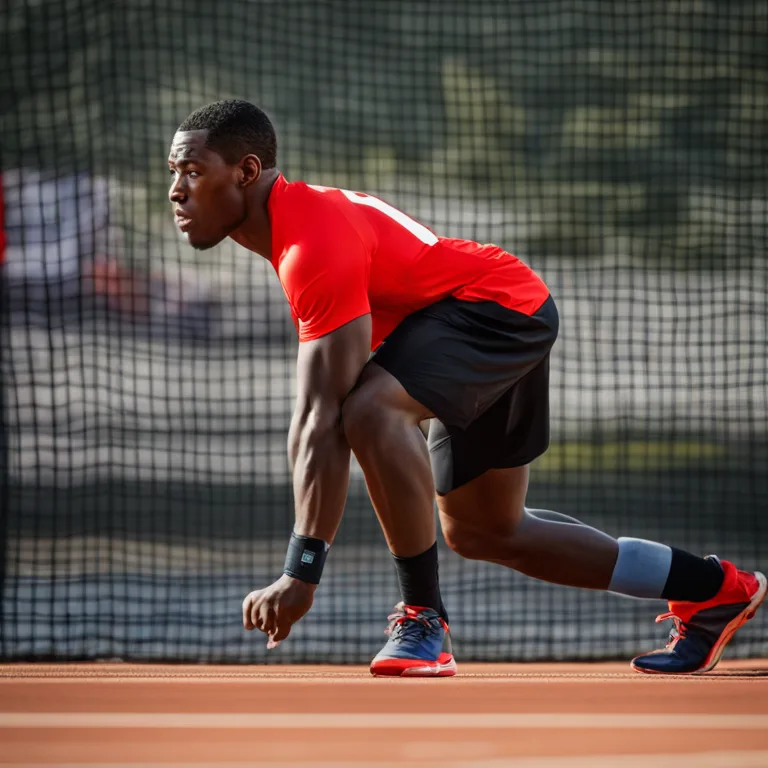
Meditation Techniques for Athletes
Discover effective meditation practices tailored for athletes to enhance focus, recovery, and performance.
article by Hina Kurosawa
Introduction to Athlete Meditation
Meditation has transcended its traditional boundaries to become a fundamental aspect of an athlete's training regimen. With the mental demands of sports ever-increasing, athletes are turning to meditation for an edge. The purpose of incorporating meditation isn't merely for relaxation; it's to sharpen focus, improve cognitive function, and foster resilience. Additionally, studies have shown that meditation can accelerate recovery times and reduce the likelihood of sports-related anxiety. As we march forward into 2024, the adoption of mindfulness practices within sports continues to rise, signifying a shift in how athletes approach their mental game.

Concentration Meditation
A critical faculty in athletic performance is the ability to concentrate. Concentration meditation practices help athletes redirect and maintain their focus on a single point, often their breath or a mantra. This form of meditation is not only useful during competition but also beneficial during training sessions. As the athlete repeatedly brings their attention back to their focal point, they develop a stronger ability to concentrate under pressure, which proves invaluable during high-stakes situations in competitive sports.

Mindfulness Meditation
Mindfulness meditation promotes heightened awareness of the present moment, an essential skill for any athlete. Through mindfulness practices, athletes learn to observe their thoughts and feelings without judgment. This awareness allows them to stay composed and react appropriately to the challenges they face in their sport. Mindfulness has been linked to reduced overall stress, which can improve athletic performance by minimizing unnecessary muscular tension and enhancing physiological recovery.

Visualization Techniques
Mental imagery, or visualization, is a potent technique where athletes mentally rehearse their sport. By vividly imagining successful execution of skills, athletes can prepare themselves mentally for actual performance. Visualization serves as a form of mental practice that studies have shown to enhance muscle memory and confidence. When coupled with physical training, visualization techniques can lead to tangible improvements in athletic ability.

Transcendental Meditation (TM)
Transcendental Meditation is gaining momentum among athletes due to its simplicity and effectiveness. This form of meditation involves silent repetition of a personalized mantra for 20 minutes, twice a day. TM has been credited with reducing stress, improving sleep patterns, and increasing overall well-being—factors that directly translate to enhanced athletic performance. As the pressures of professional sports grow, TM offers a refuge for mental rejuvenation.
Body Scan Meditation
Body scan meditation helps athletes develop a keen inward focus, promoting body awareness and relaxation. During a body scan, attention is sequentially directed to different parts of the body, noting sensations without judgment. This technique can be particularly beneficial in identifying areas of tension or discomfort, which can then be addressed to prevent injuries. Regular practice of body scan meditations has also been linked with better pain management and recovery post-exercise.
Yoga and Movement-Based Meditation
For athletes, combining meditation with movement offers a dual benefit, allowing for enhanced focus while improving flexibility and strength. Yoga, tai chi, and similar disciplines incorporate meditative elements with physical poses and sequences, engaging the mind and body concurrently. These practices promote a sense of balance and can lead to improved proprioception—a vital component of athletic performance. Movement-based meditation is particularly appealing for athletes who might struggle with seated or still meditation practices.
Incorporating Routine and Consistency
Like physical training, the benefits of meditation are maximized through consistency and routine. Athletes should aim to integrate meditation into their daily schedule, treating it with the same importance as their physical workouts. With regular practice, the mind becomes more adept at entering a state of tranquility and focus, paving the way for enhanced performance. As we move through 2024, incorporating meditation into training programs is becoming a hallmark of innovative athletic coaching.
Published: 12/20/2023
Modified: 12/20/2023
More predictions
Come back here soon to learn more about yourself and your future


The Art Of Meditative Sketching
Discover how meditation and mindfulness can enhance the art of drawing, offering a peaceful escape and a journey to self-discovery.


Meditation: Unveiling The Optimal Practice Duration
Discover how much time to dedicate to mindfulness meditation for personal growth and well-being.


Mindful Sketching: Blending Art With Presence
Delve into the serene practice of meditation and mindfulness drawing to foster inner peace and creative expression.